When it comes to woodworking, there’s nothing quite as satisfying as the powerful buzz of a circular saw slicing through a sturdy piece of timber. But have you ever wondered just how much energy is required to generate that raw cutting power? This guide has got you covered as it delves into the technicalities of calculating the wattage of your trusty circular saw. So, grab your safety goggles and get ready to saw through the confusion surrounding this essential woodworking tool. Whether you’re a seasoned DIY enthusiast or a curious novice, by the end of this post, you’ll be armed with all the knowledge you need to truly understand the energy behind your circular saw.
What is a circular saw?
A circular saw is a versatile power tool that plays an indispensable role in woodworking and other material-cutting tasks. With its ability to make quick and precise cross, bevel, miter, and rip cuts, it has become a favorite among DIY enthusiasts and professionals alike. This tool consists of an electric motor that drives a round blade or disc, which rotates at high speeds, enabling it to effortlessly cut through various materials, including hardwoods, softwoods, plywood, and even metals.
The size, type, and design of the blade, along with its teeth configuration, play a crucial role in determining the specific application and material it is best suited for. The circular saw, with its versatile capabilities, truly empowers craftsmen and hobbyists alike to unleash their boundless creativity, enabling them to achieve remarkable and awe-inspiring results with unparalleled ease, efficiency, and precision [1].
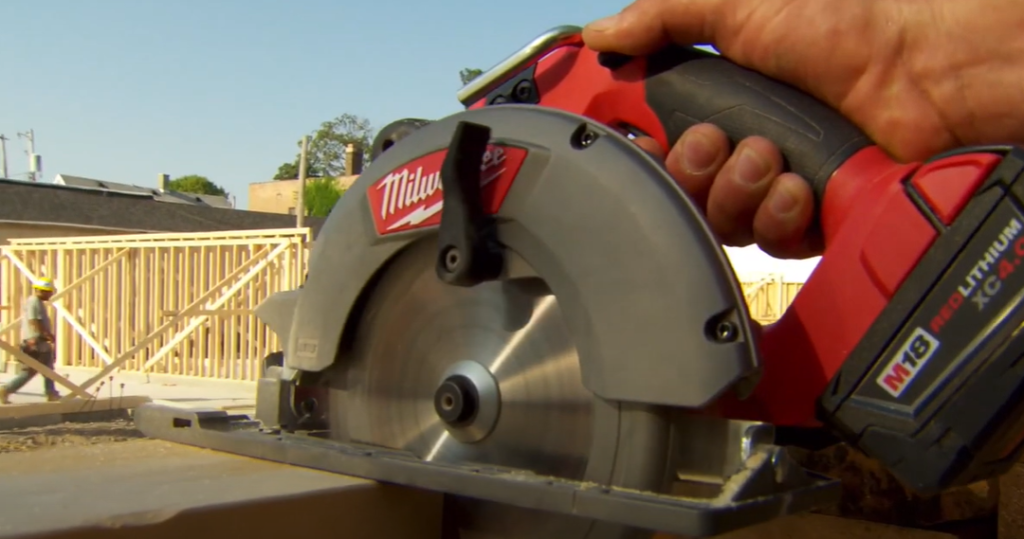
Types of Circular Saws
Sidewinder Circular Saws
Sidewinder circular saws are the most common type of saw found in workshops and households alike. They are known for their versatility and efficiency in cutting through various materials with precision. These saws typically feature a motor power ranging between 3-15 amps or 700-2100 watts, providing ample strength for tackling a wide range of projects. With their lightweight and compact design, sidewinder circular saws are perfect for both professional use and DIY enthusiasts seeking a reliable cutting tool. Whether you’re working on intricate woodworking projects or performing general home repairs, the sidewinder circular saw is a trusted companion that delivers superior performance and ease of use.
Worm Drive Circular Saws
A step up from the Sidewinder, worm drive saws provides increased power and torque for more demanding jobs. These saws are designed with larger motors that generate a higher wattage of power (typically between 15-16 amps or 2800-3400 watts). This makes them well-suited for cutting through thicker materials such as hardwoods, metal, and masonry. While the extra power of the worm drive saw means it’s slightly heavier than a sidewinder, it also provides additional control and stability which is beneficial for larger projects.
Hypoid Circular Saws
The hypoid circular saws are designed with a unique gear set which allows them to generate up to 18 amps or 5000 watts of power. This makes them ideal for heavy-duty applications such as professional construction work and other demanding cutting jobs. With their large motors and increased weight, hypoid circular saws are not meant for portability and should be used in fixed positions only. Despite its limitations, the hypoid circular saw is an invaluable tool capable of slicing through virtually any material with ease.
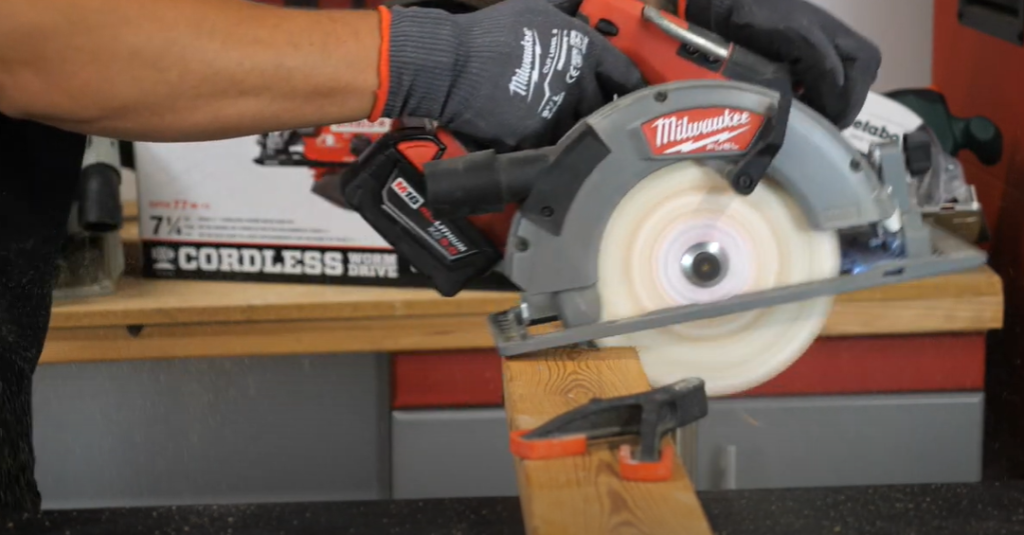
Abrasive Cut-off Saws
Abrasive cut-off saws are specialized tools used for cutting through hard materials such as metal and masonry. These industrial-grade saws feature powerful motors that typically range between 15-20 amps or 3800-6000 watts. The rotary design of the abrasive disc allows it to slice through these tough materials with ease and precision. For added versatility, some models feature adjustable speeds and cutting depths that enable them to tackle even the toughest applications. Abrasive cut-off saws are essential tools in any professional workshop or industrial setting.
Cordless Circular Saws
For those who need the convenience and portability of a cordless saw, there are several options to consider. Powered by either lithium-ion or nickel-cadmium batteries, cordless circular saws provide the same cutting performance as their corded counterparts with the added bonus of being able to operate without a power outlet. While these saws typically feature lower wattages (usually between 11-18 volts and 100-1000 watts), they are still capable of tackling a variety of tasks with ease. Whether you’re doing light work around the house or taking on larger projects in remote locations, cordless circular saws offer an ideal solution for convenience and portability.
Miter Saws
Miter saws are designed for making angled cuts with precision and accuracy. While they don’t generate the same level of power as other types of circular saws, their specialized design makes them perfect for trimming, framing and molding applications. Miter saws typically feature 6-12 amps or 1200-1800 watts of power, giving them enough strength to cut through a range of materials with ease. With their easy-to-use design and adjustable settings, miter saws are essential tools for any serious woodworker or DIY enthusiast.
Concrete Cut-off Saws
Concrete cut-off saws are specialized tools designed for cutting through concrete and masonry with accuracy. With their powerful motors, they generate high wattages (usually between 15-20 amps or 3800-6000 watts) that enable them to slice through even the toughest materials with ease. For added convenience, most models come equipped with adjustable speeds and cutting depths to accommodate different tasks. With their superior performance and durability, concrete cut-off saws are essential tools for any professional construction or home renovation job.
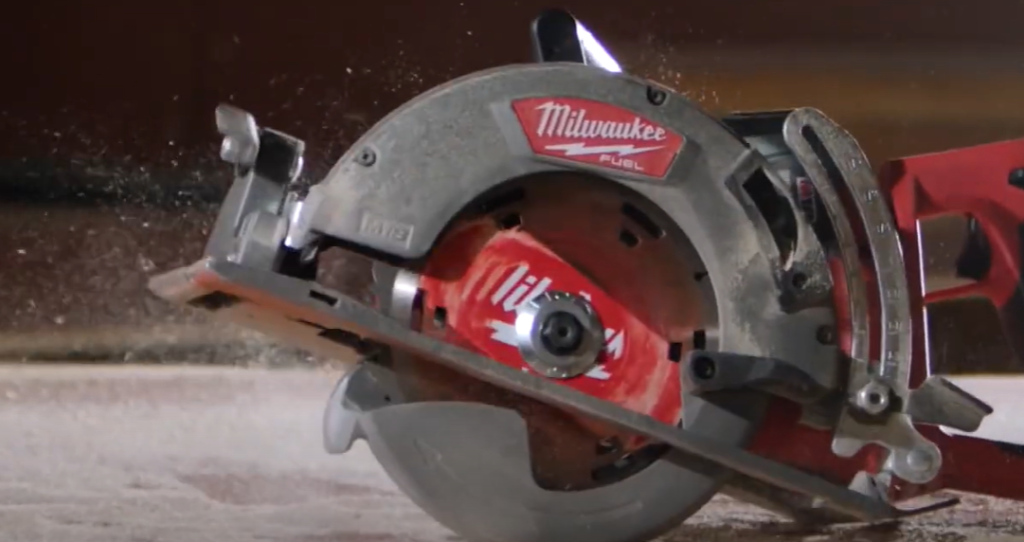
Multi-Function Circular Saws
For those who need a versatile tool capable of tackling multiple tasks, multi-function circular saws offer the perfect solution. These powerful saws feature larger motors that generate higher wattages (usually between 10-15 amps or 2000-2700 watts). This makes them well-suited for cutting through a variety of materials, including wood, metal, and masonry. With their adjustable settings and multiple attachments, multi-function circular saws are perfect for tackling any job whether it’s a small home repair project or a large-scale commercial construction [2].
What to consider when choosing a Circular Saw?
Cutting capacity
The cutting capacity of a circular saw is determined by the size of the blade and power output. In general, a circular saw with a larger blade has higher wattage, meaning it can cut thicker materials or make more difficult cuts. When considering what kind of saw to buy, think about the types of materials you will be cutting most often and look for one that matches your needs. For example, if you plan to be cutting hardwoods, look for a saw with higher wattage and larger blades to ensure that it can handle the job.
Cutting depth
When choosing a circular saw, it’s crucial to take into account the cutting depth, which is typically measured in inches. This measurement becomes especially important when considering the size of the materials you’ll be working with. While most circular saws offer a maximum cutting depth of 6 inches or more, it’s worth noting that if you’ll be dealing with thicker materials, opting for a higher-wattage saw capable of handling those tasks would be a wise choice. By selecting a saw that matches the cutting needs of your specific project, you can ensure efficient and precise cuts every time.
Bevels
Bevels are a type of cut that allows for angled cuts along the edge of a material, requiring less time and effort than manual saw work. When purchasing a circular saw, it’s important to consider the bevel capacity of the tool. Bevels range from 0-45 degrees, with some models offering even greater flexibility. Choosing one with an adjustable bevel capacity allows you to make cuts at a variety of angles, giving you the most versatility for your projects.
Speed and Control
Another important factor when selecting a circular saw is the speed and control offered by the tool. Many modern circular saws offer variable speed settings, allowing you to adjust the blade RPM to match the material being cut. This feature helps ensure a clean cut without burning or damaging the material. Additionally, many circular saws come with special features such as laser guides or dust blowers, helping you maintain control during a cut and achieve the desired results.
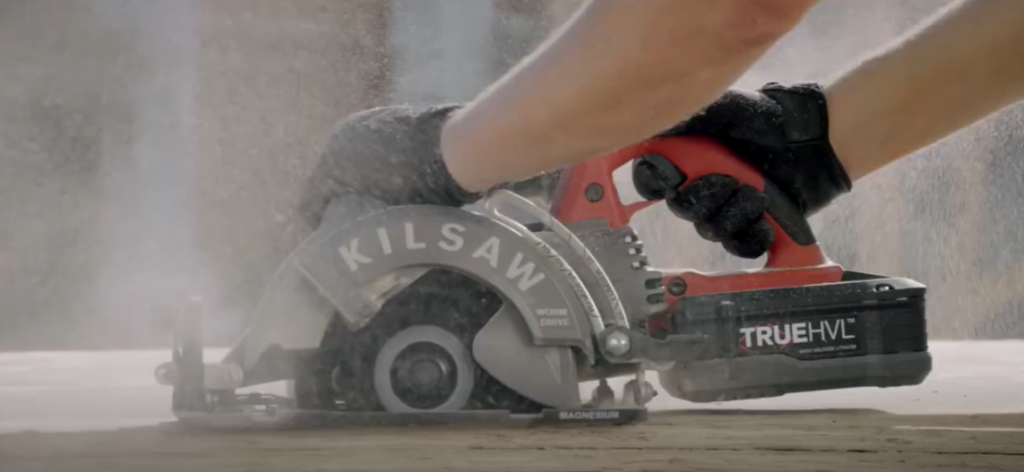
Dimensions and weight
It’s important to consider the dimensions and weight of a circular saw when deciding which model is right for you. If portability is an issue, opt for a lighter-weight saw that can easily be transported from job site to job site. On the other hand, if you’ll be working with larger materials or making long cuts, look for a saw that is more sturdy and robust, as it will offer better stability and support.
Corded vs. Cordless
When deciding on a circular saw, one important factor to consider is whether to go for a corded or cordless model. Corded saws generally provide more power and higher wattage, enabling you to make larger cuts and enjoy greater versatility. On the other hand, cordless options are often lighter in weight and easier to transport, offering convenience and maneuverability. Ultimately, your choice between the two will depend on your specific needs, preferences, and the nature of your projects. So take your time, weigh the pros and cons, and select the circular saw that best suits your requirements.
Power Rating
The power rating of a circular saw is an important factor to consider when shopping for the right model. This rating will be listed in Watts and tells you how much power your tool has available to it. The higher wattage of a saw means that it can handle thicker materials and more difficult cuts, so if you’re looking to tackle tough projects, make sure to look for a saw with higher wattage. On the other hand, if you plan to be making smaller, lighter cuts, then opting for a lower-wattage saw could be the best choice. All in all, selecting the right power rating will depend on your needs and preferences.
Blade Size
The size of the blade is another important factor to consider when purchasing a circular saw. Most saws range from 4-7 inches in diameter, with some models offering blades up to 12 inches or more. The larger the blade, the thicker the materials it can cut and the greater the versatility it offers for your projects. So if you plan on making deeper cuts and tougher cuts, look for a saw with larger blades. On the other hand, if you’ll primarily be making smaller, lighter cuts, then a smaller blade could be the ideal choice.
Ergonomics
It’s important to consider the ergonomics of a circular saw before making your purchase. To get the most out of your tool and reduce fatigue during long projects, look for models that offer adjustable handles and comfortable grips. If you plan on tackling tough cuts with heavier materials, choosing one with vibration-reducing features can help minimize strain on your hands and wrists. And if you’ll be making longer cuts, a saw with an easily accessible depth adjustment lever can make the job easier and help prevent unnecessary fatigue.

Blades type
The type of blade also needs to be taken into account when choosing a circular saw. Different blades are designed for different materials and tasks, so it’s important to select the one that is best suited for your needs. The most common types of blades include metal-cutting blades for metals such as aluminum or steel, wood-cutting blades for woods like hardwoods and softwoods, and masonry blades for concrete or brick. The blade type will depend on the materials you plan to be working with most often, so make sure to select one that matches your needs.
Extra Features
Finally, when selecting a circular saw, you should consider any extra features that may come with the model. Some of these extras can add convenience and help make your job easier. Look for saws with laser guides to help ensure straight cuts, dust blowers to keep your work area clean, or even models that offer adjustable bevels for angled cuts. While not a necessity, these features can help make your job a little easier and add to the overall efficiency of the tool [3].
What are the Benefits of a Cordless Circular Saw?
A cordless circular saw offers the convenience of being able to use it anywhere. They are great for both professional and DIY projects, as they are lightweight and easy to maneuver around a job site or shop space. Cordless saws also provide more safety features than corded versions, such as variable speeds, adjustable blades and electronic brakes. This makes them safer and easier to use, especially when it comes to working with large materials.
A cordless circular saw is usually powered by a rechargeable battery that can last for hours depending on the power and wattage used. However, they are more expensive than corded models, as they must be recharged regularly. Also, the higher wattage of the batteries will reduce the runtime of the saw, so it is important to consider both the wattage and battery size when making a purchase.
Whether you are a professional or a DIY enthusiast, a cordless circular saw is an invaluable tool for any shop space or job site. With the right wattage and battery size, these tools provide convenience and safety, as well as increased accuracy and control. Investing in a cordless circular saw is sure to yield results and help make any project easier [4].
How to Choose the Right Wattage for Your Circular Saw
Choosing the right wattage for your circular saw depends on what type of projects or tasks you are planning to do with it. If you will be using it mainly for small projects or light-duty tasks, then a lower wattage is fine. However, if you plan to use it on larger and heavier materials, then you should opt for a higher wattage to get the most power out of your saw.
The size of the project also matters when selecting the right circular saw wattage. Smaller projects require less power, while larger projects such as cutting thick wood or metal may require more wattage. Additionally, the type of material you are cutting will also impact the wattage needed to ensure a safe and efficient cut.
Another important factor in choosing a circular saw is battery life. The higher the wattage, the shorter the runtime will be. So it is important to select a battery size that will provide adequate power for the project without sacrificing too much runtime.
By considering factors such as wattage, battery size, and the type of material you are cutting, you can ensure that you choose the right circular saw for your needs. With the right combination of wattage and battery size, you will be able to get the job done quickly and efficiently.
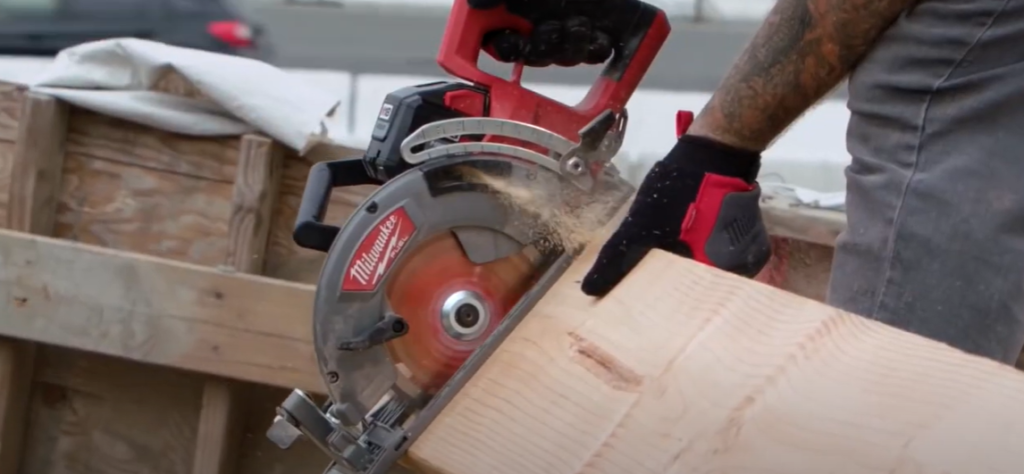
FAQ
What should I look for in a circular saw?
When shopping for a circular saw, it is important to consider the power requirements of the saw. A higher wattage rating usually indicates a more powerful motor, which will be better able to handle tougher jobs and materials. It is also important to look at other features such as blade size, speed range, and adjustable depth stop. For most home improvement projects, a saw with a motor between 1000 and 2000 watts should be sufficient.
It’s also important to consider the weight of the saw, as it will affect the ease with which you use it. Look for a model that is lightweight enough to be comfortable to handle, yet heavy duty enough to tackle tough jobs. Finally, features such as dust collection systems or laser guides can make your saw easier and safer to use.
What is the most important part of a circular saw?
The motor is the most important part of a circular saw, as it provides the power needed to cut through different materials. Look for models with higher wattage ratings for more powerful motors and better cutting performance. The blade size is also an important consideration, as the right size will help you achieve precise cuts. Finally, features such as adjustable depth stop and speed control can make your saw more versatile.
What size circular saw should I get?
The size of the saw you need will depend on what type of material you’ll be cutting and how often you plan to use it. Generally, a small model with around 1000 watts of power is suitable for smaller projects such as furniture building or light carpentry. For more demanding tasks such as roofing or flooring, a saw with 2000 watts of power is recommended. Additionally, the size and weight of your saw should be taken into consideration for easy handling and transportation.
Useful Video: POWER of Circular Saws & How It’s Determined | Right Tool For The Job
Conclusion Paragraph
The wattage of a circular saw is an important consideration when choosing the right tool for the job. The higher the wattage of a circular saw, the more powerful and efficient it will be at cutting through different materials. Generally speaking, lower wattages are suitable for light-duty projects such as trimming and sanding while higher wattages should be used for thicker materials such as wood or metal. When deciding on the wattage of a circular saw, it is important to think about the types of tasks that will be performed and the materials that will need to be cut. With careful consideration, you can choose the right circular saw for your project and get the job done quickly and efficiently.
References:
- https://home.howstuffworks.com/circular-saw.htm
- https://toolshaven.com/types-of-circular-saws/
- https://uyustools.com/how-to-choose-the-suitable-circular-saw/
- https://www.harttools.com/doitwithhart/blog/get-inspired/6-benefits-of-a-cordless-circular-saw













Leave a Reply